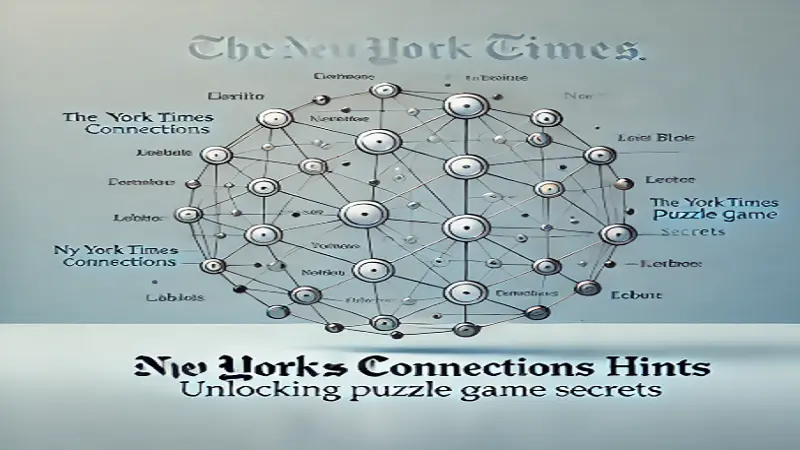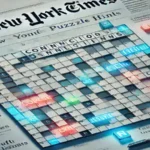The New York Times is renowned for delivering high-quality journalism, but it also offers something for puzzle enthusiasts—an array of mind-stimulating games that challenge players in creative ways. Among its roster of popular games like Wordle and Spelling Bee lies Connections, a relatively new addition that’s captivating players with its blend of logic, vocabulary, and critical thinking. This article explores NY Times Connections hints, providing insights, tips, and strategies to enhance your gameplay and solve even the most challenging puzzles.
What Is NY Times Connections?
ny times connections hints is a word-association puzzle game introduced by The New York Times. The concept is simple yet compelling: players are presented with a grid of 16 words, and their goal is to group these words into four distinct categories, with each category containing four related words. The categories might be based on themes, synonyms, associations, or even clever wordplay.
The game challenges players to think laterally and creatively, making it a hit among puzzle lovers. Each day brings a new puzzle, keeping the experience fresh and engaging.
Why Are Connections Hints So Popular?
For many players, the appeal of Connections lies in its balance of difficulty and accessibility. However, some puzzles can be tricky, requiring players to delve deep into their vocabulary and associative thinking. This is where hints come into play. ny times connections hints hints help players tackle challenging puzzles by providing subtle nudges without outright giving away the answers.
Hints strike a perfect balance—they don’t ruin the satisfaction of solving the puzzle but offer just enough guidance to prevent frustration. For instance, hints might suggest a potential theme, a clue to the kind of grouping, or even a reminder to consider alternative meanings of words.
How to Use Hints Effectively in Connections
While hints can be helpful, using them wisely can make the difference between a gratifying victory and an unsatisfying shortcut. Here are some strategies to get the most out of hints:
1. Try Without Hints First
Before resorting to hints, take a moment to analyze the grid. Look for obvious groupings or patterns, such as words that share similar meanings, are part of a common category, or appear to be related playfully.
2. Use Hints Sparingly
Hints are most effective when you’re genuinely stuck. Using them too early can rob you of the joy of discovery. Save them for when you’ve hit a wall and need a gentle nudge to move forward.
3. Combine Hints with Your Logic
Treat hints as complementary tools rather than definitive answers. Use them to confirm your suspicions or to explore possibilities you may have overlooked.
Common Challenges in Connections
Even with hints, some aspects of ny times connections hints can be particularly challenging. Here’s a closer look at common obstacles and how to overcome them:
1. Ambiguous Words
Many words in the grid can belong to more than one category. For example, “Orange” could be a fruit, a color, or even a reference to the Dutch Royal Family. To solve these puzzles, look for other words that narrow down the possible groupings.
2. Hidden Themes
Not all connections are immediately obvious. Some puzzles rely on less common themes or wordplay, such as homophones or idiomatic expressions. In such cases, stepping back and brainstorming creative associations can help.
3. Overthinking
It’s easy to overanalyze words and their relationships, especially when a puzzle seems deceptively simple. Instead of getting bogged down, trust your instincts and explore straightforward connections.
Expert Tips to Master Connections
To truly excel at Connections, consider these advanced strategies:
1. Start With the Most Obvious Group
Identify and solve the easiest category first. This reduces the number of words left on the grid, making it easier to spot patterns among the remaining words.
2. Use a Process of Elimination
If you’re unsure about a particular grouping, try pairing different words together to see which combinations work. Eliminating incorrect guesses can help you zero in on the correct answer.
3. Think Broadly
Keep an open mind when interpreting the grid. Words can have multiple meanings, so consider all possible connections. For instance, a group might include synonyms, items from the same category, or words related through puns.
4. Collaborate
Sharing the puzzle with a friend or family member can introduce new perspectives. Often, a fresh pair of eyes can spot ny times connections hints you might have missed.
How NY Times Connections Fosters Brain Health
Beyond its entertainment value, Connections offers cognitive benefits. Engaging with word puzzles like this stimulates brain activity, enhancing memory, vocabulary, and problem-solving skills. The daily mental exercise can also be a great stress reliever, providing a focused and rewarding escape from daily life.
Where to Find Daily Hints for NY Times Connections
If you’re looking for consistent help with your Connections puzzles, there are several resources available:
- Official Hints on the NY Times Website: The game itself often provides subtle hints or explanations post-solution, offering insights into the logic behind each puzzle.
- Puzzle Forums and Communities: Online forums like Reddit and Discord host vibrant communities of puzzle enthusiasts who share tips, hints, and strategies.
- Blogs and Websites: Many dedicated puzzle bloggers publish daily hints and solutions for Connections, often breaking down the reasoning behind each grouping.
Why Connections Is the Perfect Puzzle for Everyone
The beauty of ny times connections hints lies in its universal appeal. Whether you’re a seasoned wordsmith or a casual gamer, the puzzle’s straightforward mechanics and varied difficulty levels make it accessible to all. Its focus on associations and creativity adds a layer of depth, ensuring no two puzzles feel the same.
Moreover, the sense of achievement that comes from solving a particularly tricky puzzle is immensely rewarding. It’s this blend of challenge and satisfaction that keeps players coming back for more.
Conclusion
NY Times Connections hints are more than just tools to solve puzzles—they’re gateways to enhancing your understanding of word associations, lateral thinking, and problem-solving. By incorporating strategic use of hints and focusing on improving your skills, you can master the art of Connections while enjoying a daily dose of intellectual stimulation.
Learn more Connection Hints


